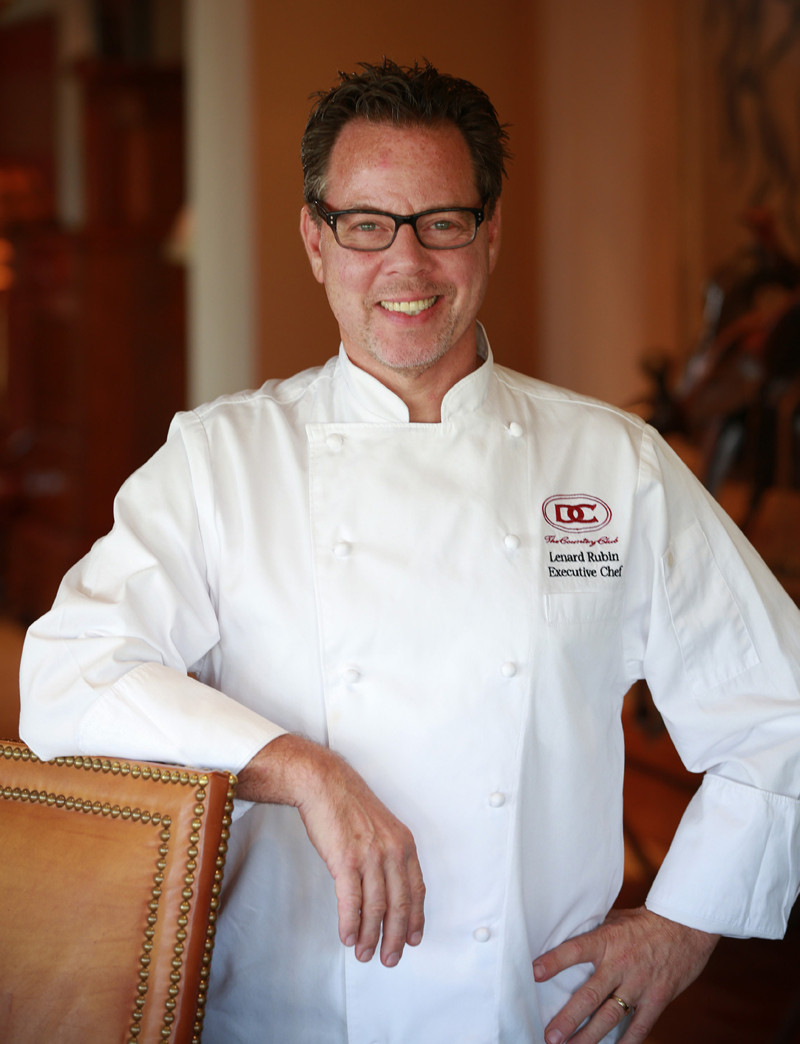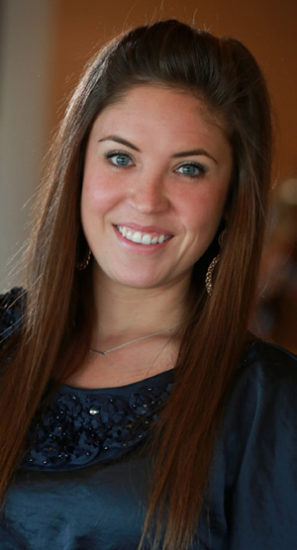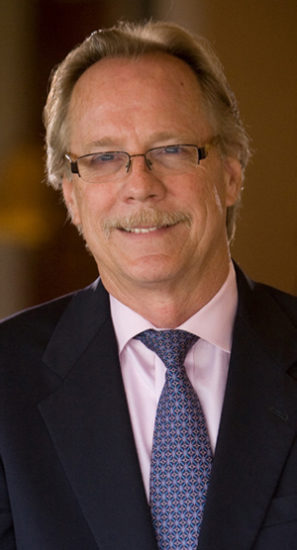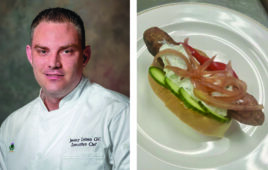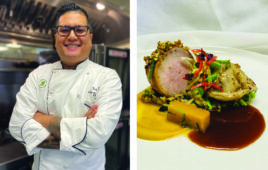At The CC at DC Ranch, consistent, high-quality food is now the focus of a new culinary vision led by Executive Chef Lenard Rubin and his dynamic F&B team.
Consistency and quality are two of the most important F&B pillars at The Country Club at DC Ranch, Scottsdale, Ariz. And with a newly cast Executive Chef and Clubhouse Manager working in tandem to raise the bar, these characteristics—and many others—have helped to transform the club’s dining operation into one of the area’s most in-demand culinary experiences.
| The CC at DC Ranch AT A GLANCEClub Name: The Country Club at DC Ranch Location: Scottsdale, Ariz. Members: 550 Average Annual F&B Revenue: $2.4 million A la carte/Banquet Mix: 70/30 Food Cost: >40% Annual Food Minimum: $1,000 Average No. Annual Golf Outings: <12 Average Member Age: 54 Annual Golf Rounds: 29,000 Average No. Annual Catered Events (weddings, showers, parties, etc.): 80 Foodservice Venues and Capacities:
Foodservice Employees: 52 |
After three years of turnover in the kitchen and declining accountability and consistency, Chef Lenard Rubin came to DC Ranch in August of 2013. “Chef’s experience is exactly what we need,” says Paul Skelton, CCM, ECM, General Manager/COO.
“He’s well-traveled. He owned and operated his own nationally recognized restaurant. He’s an expert with local cuisine. And perhaps most importantly, he’s both a good businessmen and an outstanding culinarian.”
Laura Biever came to DC Ranch as Clubhouse Manager just a week after Rubin arrived. While she boasts a shorter resume, she matches Rubin in passion and drive. “Laura blew us away in her first interview,” says Skelton. “After her second interview, we knew she was the perfect candidate for the job.”
Once they acclimated to their new surroundings, the pair set out to pursue their immediate objectives at the Ranch: Enhance the Southwestern focus of the club’s menus while increasing the use of local products and indigenous ingredients, and improve front-of-house service.
Rubin worked with his culinary team to create a new menu and Biever, previously an F&B director at Terravita Golf & Country Club in Scottsdale, set out to improve inventory management and the service approach and create a more enjoyable dining atmosphere.
Cooking classes, hosted by Chef Lenard Rubin, have helped to further connect members with their new chef.
Already, their work is reaping big rewards. They’ve lowered food costs by 3% and increased revenue and member usage. In 2013, the club had $2.4 million in F&B revenues (which represents 8.6% growth and a 19.3% positive variance to the P&L over 2012). And Saturday night covers, which typically hovered around 20, are now averaging 100 each week.
Their efforts have drawn in new members, too, and cut unnecessary costs by bringing in new suppliers and distributors, and streamlining operations.
Next on the to-do list for the Ranch is a four-month, $3.8 million renovation that will begin in May and focus on a major refreshment of DC Ranch’s signature Hacienda Clubhouse. It will add just under 2,000 sq. ft., create exciting new dining venues and provide a significant boost to the club’s F&B operation.
“To be relevant you have to be fresh,” says Skelton.
Chef wanted
When Skelton accepted his position at DC Ranch in 2010, he inherited a host of operating challenges (see “The Right Hand for the Ranch,” C&RB, May 2013). One of the most pressing of these was a mandate to turn around the club’s tired F&B operation. This included hiring a new chef, which turned out to be a far more complicated process than anyone expected.
“We brought on a talented chef who was here for 13 months before he was recruited away,” says Skelton. “Then we hired another chef who was here for six weeks before he came to me, hat in hand, and told me that the operation was more than he could handle.”
Thus began a three-month quest for what would be the club’s fourth chef in three years.
“We are fortunate to have talented sous chefs who were able to run the kitchen in the absence of an executive chef,” says Skelton. “But by this point, with little stability, there were morale issues, a lack of accountability, and very little consistency.”
By 2013, Skelton had everything else at the Ranch clicking, except F&B. Then along came Rubin, a native Arizona chef who had worked at many top Valley restaurants over his three-decades-plus career.
“We believe in hiring slow and firing fast,” says Skelton. “Four finalists were asked to compete in a tasting challenge. Chef Lenard nailed it and we offered him the job.”
A Measured Approach
With Rubin on board, DC Ranch’s F&B operation was finally headed in the right direction. But change came slowly.
“Too often, I’ve seen chefs arrive in a blaze of glory and change everything all at once,” says Rubin. “That’s counterproductive to long-term success.”
DC Ranch had been through enough change. It needed strong, steady culinary leadership first—and Rubin was up to the task.
He spent the first few weeks getting to know his sous chefs and cooks and learning their strengths and styles. He walked the dining room floor to talk with members and learn what they were looking for in their club’s dining operation. He studied the restaurants that members frequented, and reviewed suppliers and purveyors.
And slowly, once he earned the respect and trust of his team, he started making changes as needed and necessary.
“Changing our broadline distributor was the biggest adjustment, but it helped to lower our food-cost percentage instantly,” says Rubin, who worked alongside the cooks to teach them his standards and allow them to learn and understand his expectations.
“I’m not a micromanager and I’m not a yeller,” he says. “I set the standard and the pace and then give my team the autonomy to run their stations. If they aren’t doing something right, I’ll let them know.”
Tapping the Talent
Two months later, with structure finally in place in the back of house, Rubin was ready to roll out a new menu, setting a new vision that focused on food first.
“There’s a lot of talent in our kitchen, especially in Executive Sous Chef Matt Leonard and Sous Chef Erik Seitz,” he says. “We work very well together and are able to blend our ideas to create cohesive, interesting and delicious dishes.”
The three worked together to develop the club’s new menu, which features everything from a healthy, gluten-free kale and quinoa salad to a meaty lemonfish Oscar served with asparagus, lentils, and rich roasted red pepper and béarnaise sauces.
Going forward, the menu will change seasonally and continue its focus on local ingredients.
“The membership was very clear in expressing that they wanted to see more local and Southwestern influence on the menu,” says Rubin. “They also wanted more exciting salads and more healthful options for all members of the family.”
The CC at DC Ranch’s “simply grilled” section offers choice cuts on composed plates, along with one side dish.
Rubin’s new menu delivers on all fronts, even adding a small-plates section geared to teens.
“DC Ranch hangs its hat on being a family-friendly, kid-oriented club,” says Rubin. “We have a lot of little kids, but we also have a lot of teenagers. The children’s menu was missing the mark with that group, and the a la carte menu was still too sophisticated.”
To fill the void, the new dedicated small-plates section features adventurous—but still delicious and familiar—choices such as a barbecued duck confit with a cheddar-corn spoon bread, and a baked lobster-chorizo mac and cheese.
Including Everyone
As the trend toward family-friendliness continues to gain momentum, DC Ranch has found success and increased member participation in the club’s F&B program by aligning its adult programming with kid-focused events.
“If we have a wine dinner, we’ll have a special program for kids that coincides with its timing,” says Biever. “It’s such a simple strategy, yet it’s so effective.”
New leadership coupled with improved menus and better service have changed the dining landscape for members at The CC at DC Ranch.
The club’s daily continental breakfast is also a big draw for families. “One of our members and his daughter come to the club every weekday morning for breakfast before school,” Biever reports. “Bringing your children into the club like that instills wonderful values and manners. And the fact that the kids feel welcome here is irreplaceable. They are our future members.”
Thursday’s $5 burger night has become another home run among member families. “I remember thinking when I first started here that $5 burgers were crazy and that the concept couldn’t be good for the P&L,” says Skelton. “Then I walked the floor and saw members of all ages dining together, with $90 bottles of wine next to $5 burgers next to a kid-size cup of milk. That’s when I realized they were on to something.”
Simple Solution
Before Chef Rubin arrived, DC Ranch hosted a twice-weekly chophouse night. But it didn’t compare favorably to the upscale, dedicated steakhouses available to members throughout the Scottsdale area.
“The quality of the meats and sides were great, but without the ambiance and all of the other trappings of a steakhouse, it just didn’t fly with [members],” says Rubin.
As part of his strategy to reinvent the operation, Rubin cancelled the twice-a-week theme approach and instead wove the chophouse concept into the regular a la carte menu. A dedicated “simply grilled” section now offers choice cuts on composed plates, along with one side dish.
“The reason we are more successful with the ‘simply grilled’ concept is that we are not pretending we are something that we aren’t and could never be: an upscale steakhouse,” says Rubin.
Pushing Out the Walls
The upcoming renovation promises to add to the momentum by upgrading both the appeal and functionality of the Hacienda clubhouse, which opened in 1998. “It’s not about getting bigger,” says Skelton. “It’s about getting better.”
The main gathering areas will be expanded to allow for an open concept.
“Right now, you go room by room,” says Biever. “It’s very disconnected. The plan is to knock down some walls, push out some other walls and create a far more functional space.”
DC Ranch is also adding a new bar area designed in part by Biever, as well as a dedicated wine room that will double as a wine storage area.
The updates to the kitchen are relatively minor, as new equipment was purchased and installed a week before Rubin took the reins. Updates include adding a few burners to the back line and moving Pastry Chef Maryann Weber and her operation into a dedicated bakery.
“The renovation will simply give us more options,” says Biever, who notes that the club will remain open throughout the project. “We’ll have to get creative in seating once things start to move towards the end of construction and the mixed grille begins its facelift.”
Her strategy—both in moving forward with the renovation and in all aspects of her new position—has been to stay organized and keep the lines of communication wide open. And, wherever necessary, to roll up her sleeves and help get the job done.
“There’s a difference between being a boss and being a leader,” she says. “I lead by example and I try to coach staff members instead of telling them what to do. I give credit where credit is due, and I seek buy-in instead of making demands.
“I will not ask my staff to do something that I wouldn’t do,” Biever continues. “Chef is the same way. We’re doers. And we’ll continue to work together to elevate the experience for our members.”

